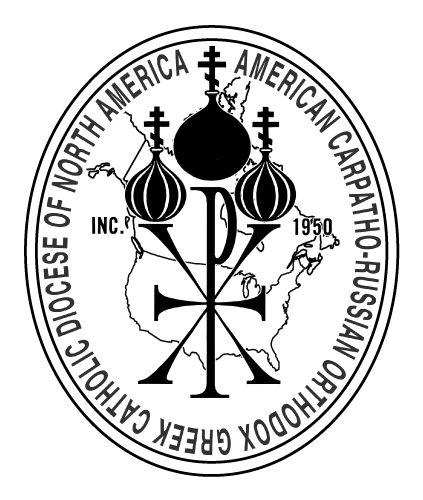Carpatho-Rusyn Prostopinije: The Samohlasen Tones |
The Stichiry SamohlasnyjaThe stichiry samohlasnyja, sung at Vespers and, on some days, in the last part of Matins, are hymnic stanzas accompanying psalm verses. The chant for the psalm verses is similar in style to the prokimen tones, described in an earlier article. In the old Greater znamennyj chant, the stichiry for feast days have melodies that are sometimes long and rather difficult, but those for weekdays have no melodies at all. Simpler Melodies Are DevelopedAt some unknown time (the 15th century?), a set of eight melodies, one for each hlas, was devised for use on weekdays, in a kind of simplified znamennyj chant. Each tone consisted of a small number (two to five) of melodic phrases employing recitative to permit lengthening and shortening to fit any phrase of the text. These phrases are repeated in a fixed sequence until the singer reaches the last phrase of the text, which is sung to a special concluding melodic phrase. Singing From MemoryThese simple melodies could be applied to any text; they could be learned quickly by memory; and they made congregational singing easy. They became quite popular, and soon replaced the older znamennyj melodies on Sundays and often even on feast days. The Written RecordThe Ruthenian version of these tones, as adopted in Moscow in the seventeenth century, was designated "Kiev chant". Some manuscript chant books included these melodies; others gave only their beginning; but most books omitted them entirely, since they were simple enough the sing from memory. They were included in the Irmologia printed in L'viv and Pochaev, beginning with the edition of 1709. Characteristic regional variants developed and were included in printed chant books of the nineteenth and twentieth centuries. The Influence of Folk SingingAs with the prokimen tones, Carpatho-Rusyns developed their own distinctive variety of these samohlasen tones, incorporating features drawn from local folk singing practices (most notably, a final cadence on a downward leap of a fourth, which occurs in several hlasy.) Only in hlas III have the alterations been drastic; here, the tonality, contour, and melodic structure have been modified by some as yet unknown influence. Distinctiveness of the ProstopinijeThe "ordinary chant" (obycnyj napiv) melodies employed for similar texts in Russian choir singing are also based on the same "Kiev chant" melodies. The prostopinije tones differ from those of the "ordinary chant" in accepting influences from folk singing, and in retaining more successfully the live and tuneful character of the original version. |
|
By Steven Reynolds, University of Oregon. From the "Carpatho-Rusyn American", Vol. III (1980), No. 2, published by the Carpatho-Rusyn Research Society. |

